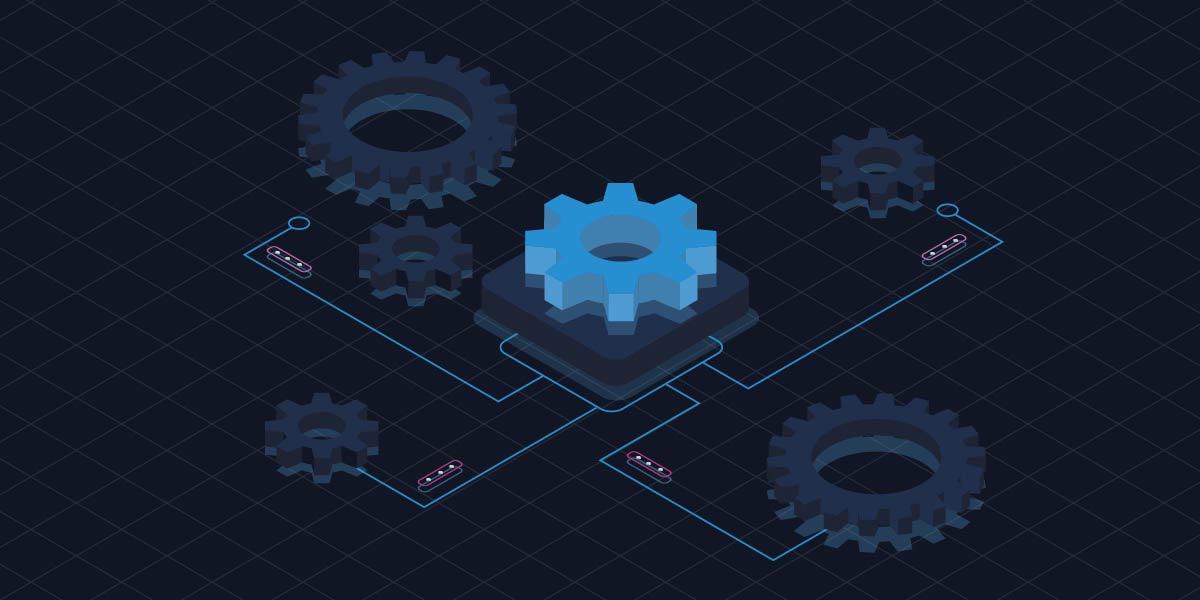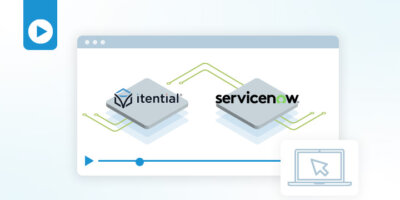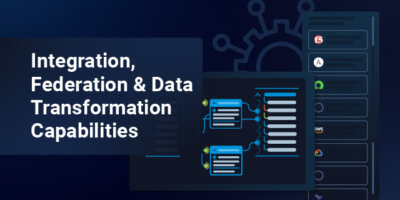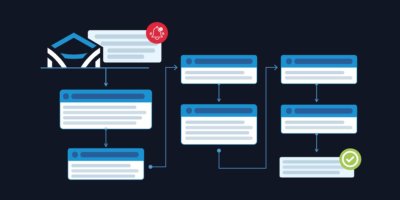In today’s networking landscape, the network is no longer just one domain, it’s multiple domains – there is the data center network, the campus network, the wireless network, the SD-WAN network, and multiple cloud networks. To complicate it further, each of these different networks have become specialized, in a sense, with their own architectures, technologies, and management methods. This has brought about a unique set of tools, applications, and solutions to manage the different domains causing network teams to become specialized in understanding the unique requirements of their network domain, and have become experts at using these unique solutions, especially when it comes to automation.
This multi-domain networking challenge leaves you asking, how can we tie our automation together across the ENTIRE network?
Why Pockets of Automation Don’t Scale
Multi-domain networks inherently lead to pockets of network automation across each team due to the unique solutions and tools required to manage each domain. For example, a network engineer that works on the data center networking team may utilize a series of Ansible Playbooks because they are readily available and have become the accepted way to automate that type of network. Their colleagues that works with the SD-WAN network are accustomed to using the vendor provided GUI dashboard, hosted on the controller, which provides some automation functions. While the renegade network engineer who now focuses on cloud networking has become proficient using Terraform, Python scripts, and APIs for automation.
While pockets of automation exist due to the explosion of multiple network domains, ironically, there’s an entire set of IT services and network applications that are commonly used by network teams across every domain. When a network change must be made, regardless of which domain, it’s a guarantee that a change request ticket will be a requirement so organizations that use ServiceNow for change requests will have that system in common for every network team. Network information is typically managed in some source of truth, so whenever an IP address is required, every network team is drawing from the same well, probably an DDI or IPAM system. Real-time communications are the norm now, so every network team member is probably leveraging the same messaging systems, like Slack or MS Teams, to keep everyone up to date on ongoing network activities.
And that brings up an interesting dilemma, one that every enterprise network team will need to solve — how do you automate across every network domain, include every common (and uncommon) IT system, when you have such disparate networks with isolated pockets of automation that don’t directly work together?
Right now, for most organizations, the answer is: “You can’t, so you don’t.” Currently, people must step up and manually fill in the gap across the automation process, because when someone needs a new service or application on the network it touches multiple domains. Applications may be simultaneously hosted in the on-prem data center, and a portion on a cloud network, accessed by a co-worker who’s located across an SD-WAN connection, using wireless at the remote office. This dilemma has stifled automation growth and efficiency by burdening network teams with more manual processes and monotonous activities.
How Itential Automates Across Every Network Domain to Enable Scalable Automation
How can you take these pockets of automation and the IT systems that are needed to do so, and tie them all together? Solving that problem is the very core of how Itential works and the only way network teams are able to achieve scalable network automation across their organization.
The Itential Automation Platform has three fundamental features that unlock the automation potential for the network team, regardless of what domains they are responsible for:
Integration
With Itential, it becomes a simple task to auto generate any API or ingest any vendor’s published API, ingest it into the platform, and make every method defined in the document available for use with automations with the largest library of Pre-Built Integrations on the planet. This gives you the ability to onboard network controllers, IT systems, sources of truth and more and if no API exists, Itential has a solution to provide API interfaces for assets such as Python Scripts and Ansible Playbooks.
Federation
Take every system integrated into the platform, make it easy to access, and normalize how to use them in an automation. Regardless of whether it’s a network device, cloud service, or IT system, everything becomes a drag-and-drop task on the automation canvas, so you can build out a logical sequence of automated steps that parallels your standard process.
Data Transformation
Create a visual method to allow data from one API call to be quickly changed so that it meets the required format for another API call. Every API call has a different set of input data requirements, so data manipulation between these different systems becomes critical for automation, otherwise people must continue to fill in the gap. With Itential, our platform allows for the transformation of data from any workflow task to another task in real time, and every transformation is a reusable asset that can be utilized across multiple automations.
This may sound too good to be true, but you can actually see this very solution demonstrated during our recent session at Tech Field Day Extra at Cisco Live. During this quick demo, our CTO Chris Wade and Head of Solutions Engineering, Karan Munalingal illustrated Itential’s ability to accomplish this by integrating with IT systems (Infoblox, Netbox), Networks (Data Center NX-OS, Viptela SD-WAN) and automation assets (Python Scripts, Ansible Playbook), federating them so they become steps in a workflow, and enabling them to all work together seamlessly by transforming data, ensuring the proper format for each task in the automation.
Watch the full demo here.





